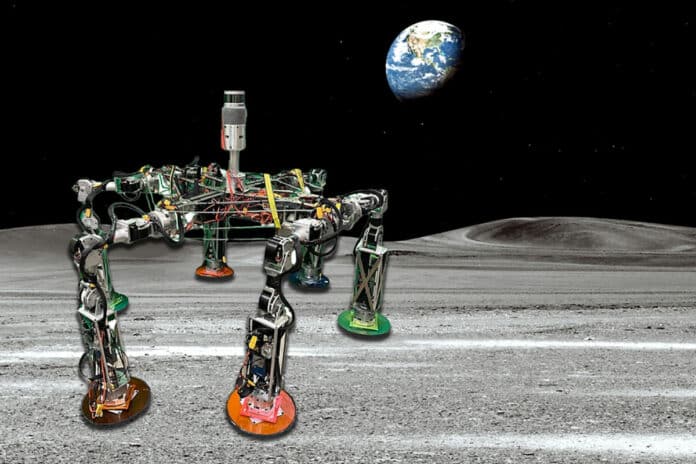Robots can carry out a single task efficiently. However, a single robot cannot perform multiple functions with the same efficiency or efficacy. Bringing a bunch of different robots on lunar missions would be highly inefficient.
To solve this problem, a team of MIT engineers has designed a kit of universal robotic parts that an astronaut could easily mix and match to make whatever robot is needed to fit various missions on the moon. The robot can be disassembled once a mission is completed, and its parts can be used to configure a new robot to meet a different task.
Called the Walking Oligomeric Robotic Mobility System (WORMS), the system was first conceived last year in response to NASA’s Breakthrough, Innovative, and Game-changing (BIG) Idea Challenge. In the competition, NASA asked university students to develop robotic systems that can move across extreme extraterrestrial terrain without the use of wheels.
The WORMS consists of worm-inspired robotic limbs that an astronaut can easily snap onto a base and that work together as a walking robot. Depending on the mission, parts can be configured to build, for instance, large packs of bots capable of carrying heavy solar panels up a hill. The same parts could be reconfigured into six-legged spider bots that can be lowered into a lava tube to drill for frozen water.
The system’s main parts include the appendage, or worm, which can be attached to a body or chassis via Universal Interface Blocks (UCIs) that snap the two parts together through a twist-and-lock mechanism. The parts can be disconnected with a small tool that releases the block’s spring-loaded pins.
Appendages and bodies can also snap into accessories such as a “shoe,” which the team engineered in the shape of a wok, and a LiDAR system that can map the surroundings to help a robot navigate.
In future iterations, researchers hope to add more snap-on sensors and tools, such as winches, balance sensors, and drills.
As a proof of concept, the MIT team built a six-legged robot about the size of a go-cart. In the lab, they showed that once assembled, the robot’s independent limbs worked on walking over level ground.
“You could imagine a shed on the moon with shelves of worms,” says team leader George Lordos. “Astronauts could go into the shed, pick the worms they need, along with the right shoes, body, sensors, and tools, and they could snap everything together, then disassemble it to make a new one. The design is flexible, sustainable, and cost-effective.”
